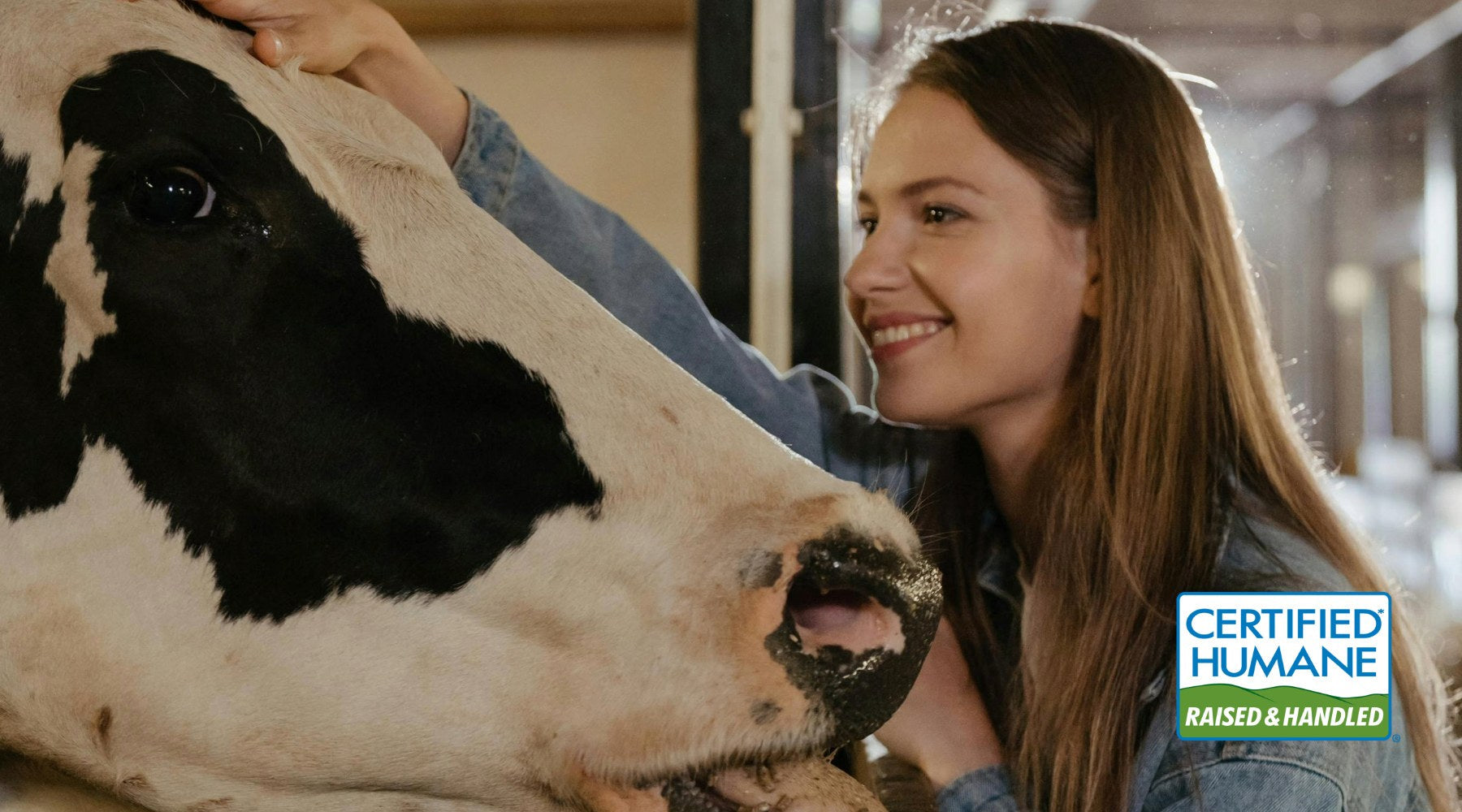How To Be An Ethical Omnivore 101
In an era where the health and sustainability of our planet is a prevalent concern, you have the power to make conscious decisions that positively impact the environment, animal welfare and your own health. This can include choosing to be an ethical omnivore. Essentially, what this term means is to consider the consequences of your food choices, striving to minimize harm while nourishing yourself.
In this guide, we'll explore the environmental impact of food production and how you can make informed decisions to reduce your carbon footprint by understanding the complexities of our food system and embracing mindful consumption.
Understanding the Impact of the Food Production
Food production has a profound impact on the environment, affecting various ecosystems and natural resources.
- Land Use and Habitat Loss: Agriculture accounts for a significant portion of global land use, with 80% of deforested areas in the Amazon being converted for crop cultivation and livestock grazing. This land conversion leads to extensive habitat loss, threatening biodiversity and ecosystem stability.
- Greenhouse Gas Emissions: Production is a major source of greenhouse gas emissions, primarily from livestock farming, crop cultivation, and food processing. These emissions contribute to climate change and its associated impacts, such as extreme weather events and sea-level rise.
- Water Scarcity and Depletion: Water use in agriculture, particularly for irrigation purposes, further strains freshwater resources, leading to water scarcity and depletion of aquifers.
- Pollution and Eutrophication: Fertilizer runoff from agricultural fields can pollute waterways, causing eutrophication and harming aquatic ecosystems. Understanding these environmental impacts is critical for ethical omnivorism and adopting more sustainable dietary practices.
Tips to Be an Ethical Meat Consumer
When it comes to ethical meat choices, pasture-raised and grass-fed certifications are your best bet. Meat labeled as pasture-raised means the animals were allowed to graze freely on open land rather than confined feedlots.
This lifestyle not only benefits animal welfare but also plays a role in conserving carbon. Well-managed grazing can help sequester carbon in the soil, reducing greenhouse gas emissions and supporting ecosystem health. Plus, the certification ensures that your meat is higher in nutrients and free of harmful hormones and antibiotics.
Opt for Transparent and Trusted Certifications
When choosing ethically sourced meat, look for certifications that are transparent and independent, like Certified Humane, Animal Welfare Approved (AWA), and USDA Organic. These institutions operate independently, free from conflicts of interest. They don't receive funding from the sale of certified products or contributions from logo users (outside of certification fees). This ensures that their standards are set with animal welfare in mind, not corporate profits.
Certifications like Certified Humane and AWA require that animals are audited throughout their lives—from birth through slaughter—ensuring that ethical practices are upheld every step of the way. Additionally, certified animals are prohibited from receiving growth hormones and antibiotics, promoting both humane treatment and a healthier food source.
Understanding the Global Animal Partnership (GAP) Grading System
If you see the GAP label below the certification logo on your meat, it’s helpful to understand what the levels mean. GAP has a 5-step system that differentiates between levels of animal welfare standards. Here’s a quick breakdown:
- Levels 1–3 are focused on basic certifications with enriched environments and outdoor access (Levels 2 and 3). However, these levels do not guarantee pasture-raised animals.
- Level 4 is where things start to get serious about animal welfare. At this level, animals are pasture-raised, meaning they spend most of their lives outdoors in natural environments, with access to pasture. This level also includes stricter animal welfare requirements.
- Levels 5 and 5+ signify even higher welfare standards. Animals live on pasture and are raised in systems that support their natural behaviors for their entire lives, even through the end-of-life process.
Opting for Level 4 or above ensures you’re choosing meat from animals that lived in conditions closer to their natural habitats, benefiting both animal welfare and environmental health.

Certification Processes and Requirements
The certification process is rigorous. Farms applying for certifications like Certified Humane, AWA or USDA Organic undergo initial preparation and a thorough on-site audit by the certifying body. Once certified, these standards must be maintained, with farms undergoing regular audits (often every 15 months) to ensure they remain compliant.
Is Ethically Sourced Meat More Expensive? Here’s a Solution
Yes, ethically sourced, certified meat often comes at a higher price. But one approach to offset the cost is simply to buy less meat. By eating more plant-based foods and reserving ethically sourced meat for when you do eat meat, you can still enjoy high-welfare, pasture-raised options without breaking the bank. This not only supports ethical farming practices but also reduces overall demand for meat, helping the environment.
This way, you’re making choices that align with your values—supporting animal welfare, environmental sustainability, and better quality meat on your plate.
Moderate Consumption of Red Meat
Red meat, including beef and lamb, carries a significant carbon footprint due to intensive farming practices and methane emissions from livestock. Besides, while meat and fish are convenient sources of macro and micro nutrients, they are not essential components of a balanced diet. Even omnivorous diet studies recommend limited consumption, typically suggesting two portions of fish per week and sparing consumption of red meat.
Additionally, it's essential to recognize that plant-based sources can provide essential nutrients traditionally obtained from meat. Iron, vitamin B12 (found in nutritional yeast, for example), zinc, and complete protein are all attainable from plant-based sources. Algal oil, derived from algae, serves as a direct source of DHA and EPA omega-3 fatty acids, similar to those found in fish (as fish consume these algae).
Incorporate Plant-Based Proteins
Plant-based proteins offer a sustainable and environmentally friendly alternative to animal products with lower carbon footprints. Foods like peas, beans, chickpeas, lentils, quinoa, tempeh, and tofu are rich sources of protein that require fewer resources to produce compared to meat. Incorporating more plant-based proteins into your meals is not only beneficial for the environment but also for your health.
Begin by introducing new plant-based ingredients into your favorite dishes, such as adding beans to soups and salads or swapping meat with tofu in stir-fries and curries. Experiment with different cooking methods and flavor combinations to create satisfying and nutritious plant-based meals. By diversifying your protein sources and reducing your reliance on animal products, you can significantly lower your eco-footprint.
You don’t need to worry about eating plant-based proteins that aren't "complete" because, with a balanced plant-based diet, you’ll still get all the essential amino acids your body needs. Here’s why:
-
Amino Acid Variety in Different Foods: Most plant proteins may not have a “complete” amino acid profile (meaning they don’t contain all nine essential amino acids in the exact proportions your body needs), but by eating a variety of plant-based foods throughout the day, you can still meet your amino acid requirements. For example, grains like rice and wheat lack sufficient lysine, but legumes (like beans, lentils, and chickpeas) are rich in it. Together, they form a complete protein.
-
Your Body Stores Amino Acids: You don’t have to eat all essential amino acids in a single meal. Your body stores amino acids from the foods you eat and assembles them as needed, so you’ll still be able to build “complete” proteins even if you’re not eating them in one go.
-
Plenty of Complete Plant Proteins Exist: Some plant-based foods are naturally complete proteins, like quinoa, chia seeds, hemp seeds, and soy. Including these in your diet can also ensure you’re getting all essential amino acids without much extra planning.
- Vegetables Do Contain Amino Acids: Leafy greens, cruciferous and other vegetables are also good sources of amino acids and provide a variety of nutrients, including fiber, vitamins, and antioxidants.
Cut Down on Food Waste
Food waste is a significant contributor to resource depletion and environmental degradation. When food is wasted, all the resources used in its production, including land, water, energy, and labor, are also wasted, further exacerbating environmental issues such as deforestation and climate change. Thus, to reduce food waste at home, it's essential to be mindful of your consumption habits and take proactive steps to minimize waste.
Get started by planning your meals and shopping lists carefully to avoid purchasing more food than you need. Store perishable items properly to extend their shelf life, and use leftovers creatively in new meals to prevent them from going to waste.
In addition, composting organic waste can help divert food scraps from landfills, where they would otherwise generate methane, a potent greenhouse gas. By adopting simple habits such as these, you can decrease food waste considerably and lessen your environmental impact.
Sustainable Packaging Solutions
When buying meat and fish, think about the impact of packaging. Styrofoam is terrible for the environment as it takes centuries to break down and pollutes ecosystems. Plastic wrap can release microplastics into food, posing health risks. To minimize this, try buying from places that use eco-friendly packaging or bring your own reusable containers. I personally buy from Butcherbox and Whole Foods when I can’t find a local butcher with the right certifications.
Everyone Can Be an Ethical Omnivore by Making Small Changes
Adopting ethical eating habits is essential for promoting sustainability and mitigating the ecological effects of food production. By making better food choices, regulating red meat consumption, integrating plant-based proteins, and reducing food waste, you can start to change things.
Remember that every food decision you make has an impact, and small changes in your diet can make a big difference for the planet - that’s what we at Everyday Essentialist wholeheartedly believe. So as you embark on your journey toward ethical consumerism, continue to educate yourself, experiment with new recipes, and advocate for sustainable food practices in your community. Together, we can create a healthier and more sustainable future for ourselves and generations to come.
Looking for a Recipe? Search here!

Hey there! So… who even am I, and why should you trust me? I’m Tamara—just a girl trying to live her happiest, healthiest life.
After years of traveling the world as a digital nomad (with everything I owned in two suitcases), I discovered that a sustainable lifestyle gave me so much freedom and joy. I eat better food, I own fewer but better things, and this mindset helped me stay sane—especially after becoming a parent. I love my life and my daughter deeply, and that’s a big part of why I live low waste too: to respect the generations to come and do my part for a better tomorrow.
This little corner of the internet is a reflection of that journey—where I share what’s truly worked for me and what I genuinely use and love in my own life. So glad you're here!




Leave a comment
This site is protected by hCaptcha and the hCaptcha Privacy Policy and Terms of Service apply.